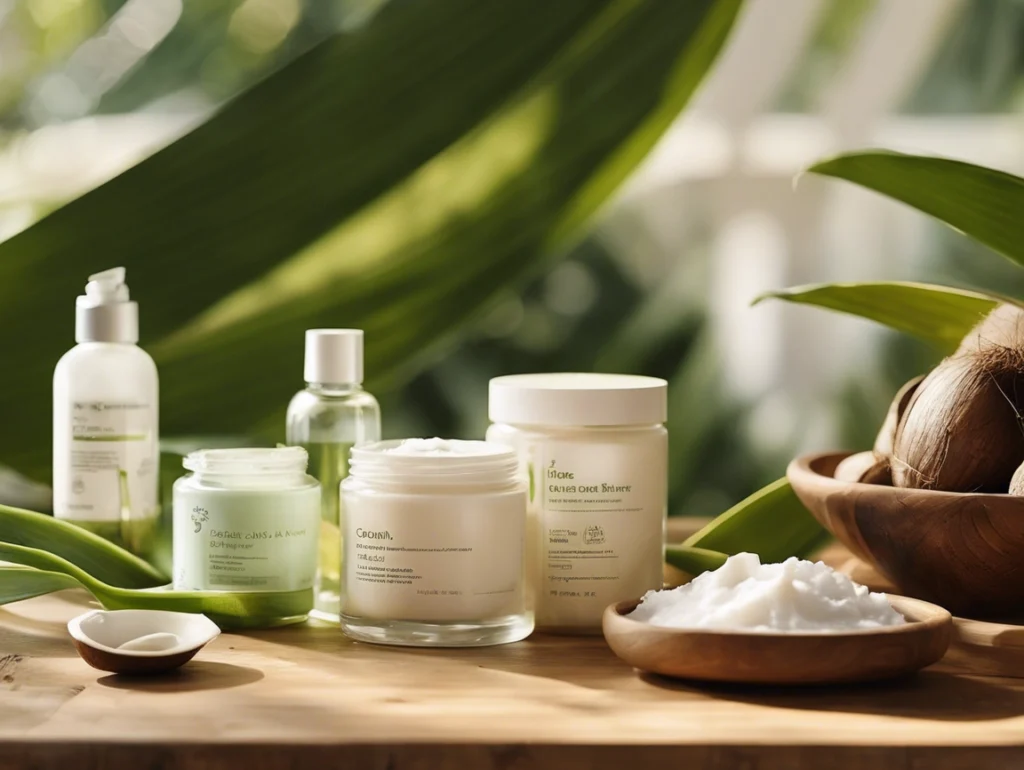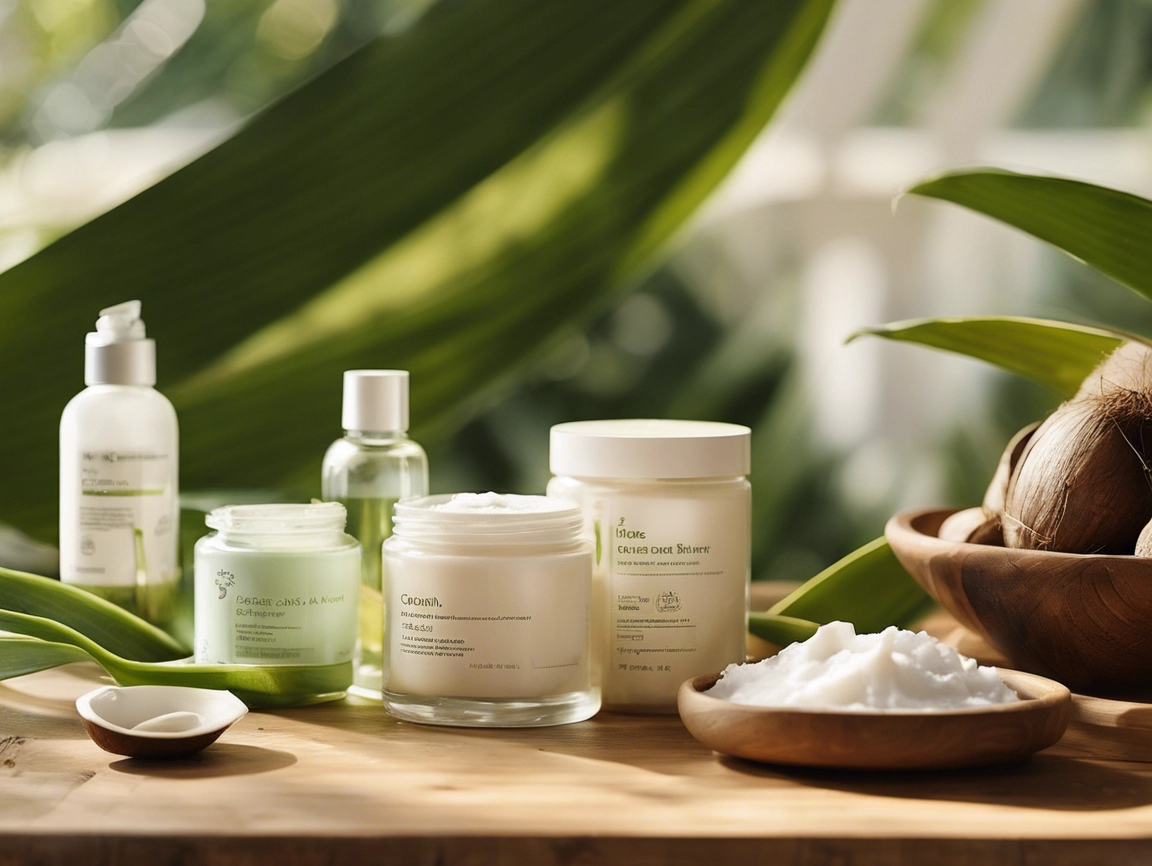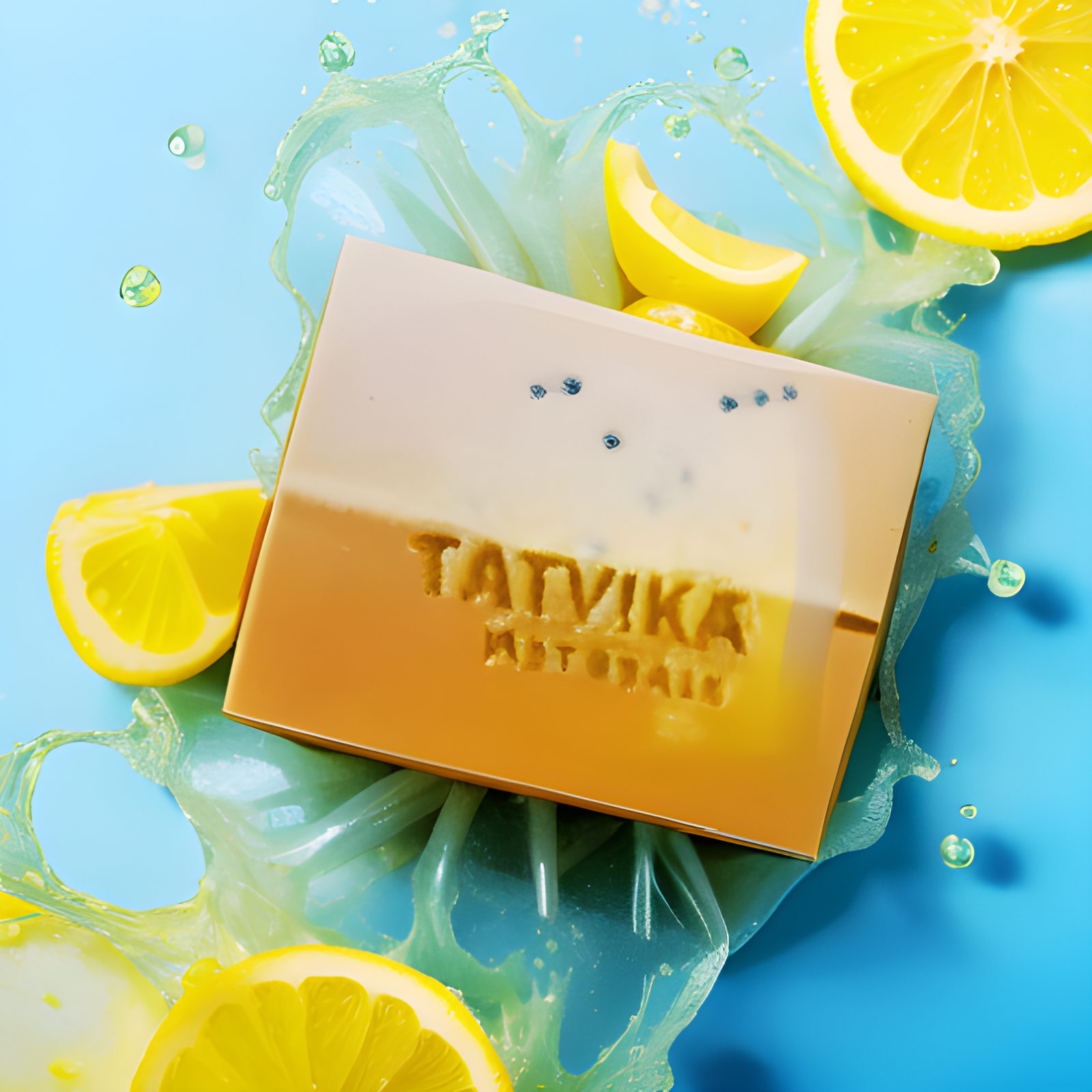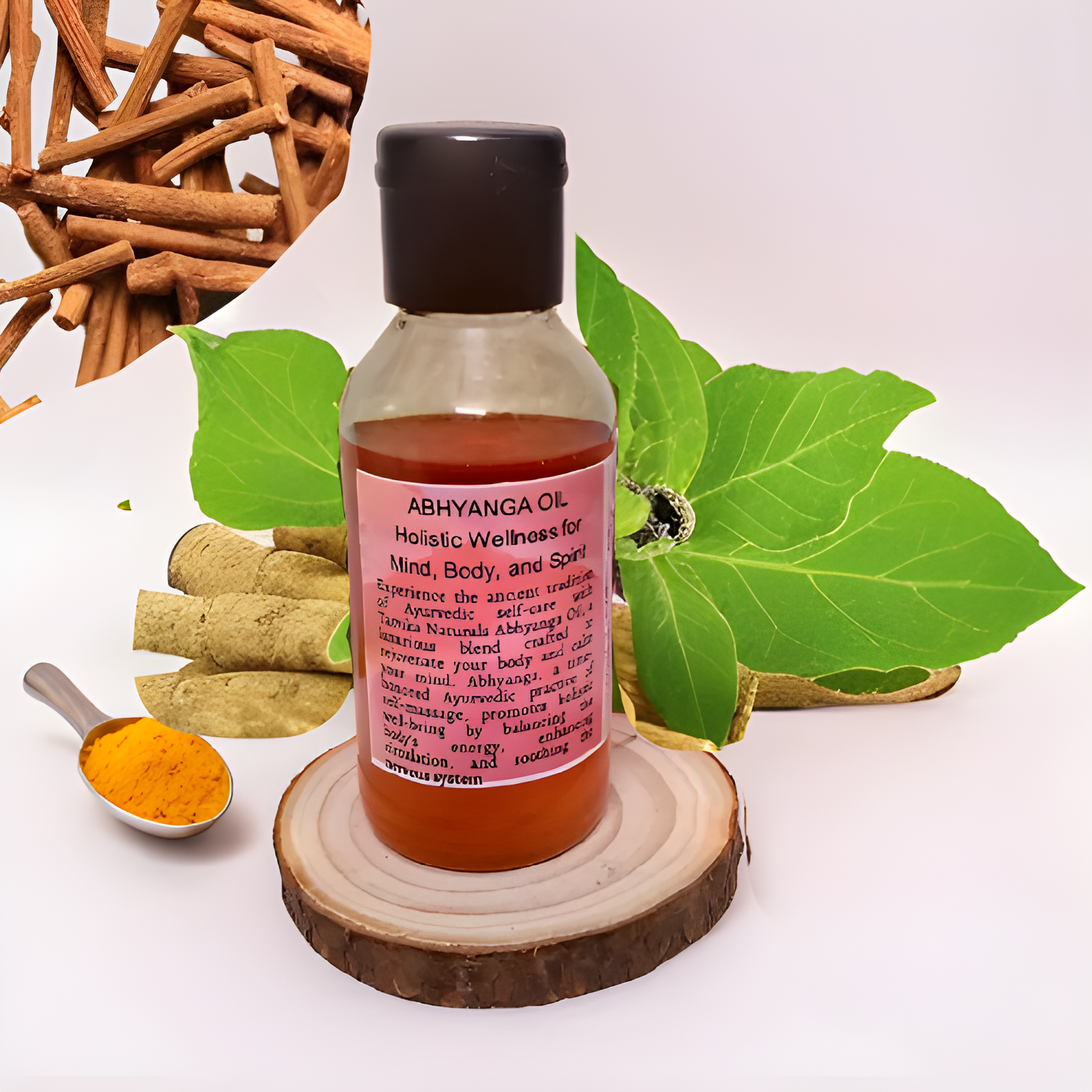
Introduction to Organic Cream: Definition, Benefits, and History
In the ever-evolving landscape of skincare, organic cream has emerged as a preferred choice for many individuals seeking natural, effective, and sustainable solutions for their skin health. This introduction will delve into the definition and benefits of organic cream, as well as its historical context and evolution.
Definition and Benefits of Organic Cream
What is Organic Cream?
Organic cream is a type of skincare product that is formulated using organic ingredients, which are grown without the use of synthetic fertilizers, pesticides, or genetically modified organisms (GMOs).
Benefits of Organic Cream
The benefits of using organic cream are multifaceted:
- Natural Ingredients: Organic creams are made from natural ingredients that are less likely to cause adverse reactions compared to synthetic chemicals found in conventional creams. Ingredients like coconut oil, shea butter, aloe vera, and essential oils provide deep hydration and nourishment without harsh side effects.
- Environmental Sustainability: The production of organic ingredients is more environmentally friendly. Organic farming practices promote soil health, conserve water, and reduce pollution, making organic creams a more sustainable choice.
- Better Skin Health: Organic creams often contain antioxidants and other beneficial compounds that help protect the skin from environmental stressors and promote overall skin health. They can help soothe dry or irritated skin, reduce inflammation, and improve skin elasticity.
- Customization: Many organic creams can be customized with different essential oils or natural extracts to suit individual skin types and needs.
Why is Organic Cream Gaining Popularity?
The increasing popularity of organic cream can be attributed to several factors:
- Growing Awareness of Chemicals in Skincare: Consumers are becoming more aware of the potential harm caused by synthetic chemicals in conventional skincare products. This awareness has led to a shift towards natural and organic alternatives.
- Demand for Sustainable Products: The global trend towards sustainability extends beyond food to personal care products. Consumers are seeking products that not only benefit their health but also contribute to environmental well-being.
- Rise of Wellness Culture: The wellness culture emphasizes holistic health practices, including the use of natural and organic products. Organic cream fits perfectly into this lifestyle by offering a healthy and sustainable skincare option.
History and Evolution of Organic Skincare
The concept of organic skincare is not new; it has roots in ancient civilizations where natural ingredients were used extensively for beauty and health.
Ancient Origins
In ancient cultures such as Egypt, Greece, and Rome, people used natural ingredients like olive oil, honey, and herbs for skincare. These early formulations were based on empirical knowledge passed down through generations.
Modern Era
In the early 20th century, skincare began to shift towards more synthetic and chemical-based products. However, by the mid-20th century, there was a growing interest in natural and organic products driven by consumer concerns about health and environment.
Contemporary Organic Skincare
Today, organic skincare is a thriving industry with a wide range of products available. From small artisanal brands to large corporations, many companies are now offering organic options.
- Innovative Ingredients: Modern organic creams often incorporate innovative natural ingredients such as plant stem cells, green tea extract, and other botanicals that offer advanced skincare benefits.
- Technological Advancements: Advances in technology have improved the formulation and stability of organic creams, making them more effective and longer-lasting than their predecessors.
- Consumer Education: There is a greater emphasis on consumer education today. Brands are providing detailed information about ingredients, and benefits to help consumers make informed choices.
Conclusion
Organic cream represents a significant shift in the skincare industry towards natural, sustainable, and effective solutions. With its rich history rooted in ancient practices and its evolution over time to meet modern standards, organic cream offers numerous benefits that align with contemporary values of health, sustainability, and wellness. As consumers continue to seek out healthier alternatives for their skin care routines, the popularity of organic cream is likely to grow even further.
By understanding what organic cream is, its benefits, and its historical context, individuals can make informed decisions about incorporating this product into their skincare regimen. Whether you’re looking for a more natural approach to skincare or simply want to contribute to environmental sustainability through your choices.
Ingredients in Organic Cream: Natural Components
Organic creams are renowned for their use of natural ingredients, which provide a multitude of benefits for the skin without the harsh effects of synthetic chemicals. In this section, we will delve into the common natural ingredients found in organic creams that ensure these products meet stringent organic standards.
Natural Ingredients in Organic Creams
Organic creams are formulated with a variety of natural ingredients, each chosen for its unique properties and benefits.
Coconut Oil
Coconut oil is a popular ingredient in many organic creams due to its rich moisturizing properties. It is derived from the meat of mature coconuts and is known for its high content of fatty acids, particularly lauric acid. Coconut oil helps to hydrate the skin, reduce inflammation, and protect against environmental stressors.
Shea Butter
Shea butter, extracted from the nuts of the shea tree, is another key ingredient in organic creams. It is rich in vitamins A and E, as well as fatty acids, which make it an excellent emollient. Shea butter helps to soothe dry skin, reduce wrinkles, and improve skin elasticity.
Aloe Vera
Aloe vera is a versatile plant extract that has been used for centuries for its healing properties. In organic creams, aloe vera is valued for its ability to soothe irritated skin, reduce inflammation, and provide hydration. It contains vitamins A, C, and E, along with minerals like calcium and potassium.
Essential Oils
Essential oils are concentrated plant extracts that add fragrance and additional benefits to organic creams. Common essential oils used include lavender oil for its calming effects, tea tree oil for its antimicrobial properties, and rosemary oil for its antioxidant benefits. These oils can enhance the overall efficacy of the cream while providing a pleasant aroma.
Other Natural Ingredients
- Jojoba Oil: Similar in composition to the skin’s natural oils, jojoba oil helps balance the skin’s moisture levels.
- Green Tea Extract: Rich in antioxidants, green tea extract protects the skin from oxidative stress and environmental damage.
- Honey: Known for its antibacterial and moisturizing properties, honey is often added to organic creams to promote skin health.
- Oat Kernel Oil: Derived from oats, this oil is soothing and calming, making it ideal for sensitive skin.
Tips for Choosing the Right Organic Cream
When selecting an organic cream, consider the following tips:
- Patch Test: Always patch test a new product on a small area of your skin before widespread use to check for any adverse reactions.
Conclusion
Organic creams offer a natural and effective way to care for your skin without exposing it to harsh synthetic chemicals. The common natural ingredients found in these creams—such as coconut oil, shea butter, aloe vera, and essential oils—provide numerous benefits ranging from hydration and soothing irritated skin to protecting against environmental stressors.
Benefits for Skin Health: The Advantages of Organic Creams
Organic creams have become a staple in many skincare routines due to their numerous benefits for skin health. These creams offer a natural, effective, and sustainable way to maintain healthy and vibrant skin. Here, we will delve into the key benefits of organic creams, including their ability to provide deep hydration and moisturization, their antioxidant properties, and their soothing effects on irritated skin.
Hydration and Moisturization
One of the primary benefits of organic creams is their ability to provide deep hydration and moisturization without relying on harsh chemicals.
Natural Emollients
Organic creams are formulated with natural emollients such as coconut oil, shea butter, and jojoba oil. These ingredients help fill gaps between skin cells, making the skin feel smooth and supple. Unlike synthetic moisturizers that can strip the skin of its natural oils, organic emollients work in harmony with the skin’s natural barrier function.
Humectants
Many organic creams include humectants like honey and aloe vera, which attract moisture from the air into the skin. This helps maintain hydration levels throughout the day, even in dry or dehydrated skin conditions. The combination of emollients and humectants ensures that the skin remains well-hydrated and protected.
Occlusive Properties
Ingredients like coconut oil and shea butter also possess occlusive properties, forming a protective barrier on the skin’s surface. This barrier prevents moisture loss and protects against environmental elements such as wind, cold weather, and pollution. By locking in moisture, these ingredients help maintain skin hydration for an extended period.
Antioxidant Properties
Organic creams are rich in antioxidants, which play a crucial role in protecting the skin from environmental stressors.
Plant-Derived Antioxidants
Ingredients like green tea extract, rosemary oil, and pomegranate extract are common in organic creams due to their high antioxidant content. These antioxidants neutralize free radicals that can cause oxidative stress and damage to skin cells. By protecting against free radicals, organic creams help prevent premature aging signs such as fine lines, wrinkles, and age spots.
Environmental Protection
Antioxidants in organic creams also shield the skin from environmental pollutants like UV radiation, smoke, and other airborne toxins. This protection helps maintain skin health by reducing inflammation and preventing damage caused by external factors.
Anti-Inflammatory Effects
Many antioxidant-rich ingredients in organic creams have anti-inflammatory properties. For example, aloe vera and green tea extract can reduce redness and inflammation, promoting overall skin health and well-being.
Soothing Irritated Skin
Organic creams are particularly beneficial for soothing dry or irritated skin due to their gentle and nourishing properties.
Calming Ingredients
Ingredients like aloe vera, chamomile oil, and lavender oil are known for their calming effects on irritated skin. These ingredients reduce redness and discomfort while providing hydration to dry areas. They are often used to treat minor burns, chapped lips, or other forms of skin irritation.
Gentle Formulation
The simple yet effective formulation of organic creams makes them suitable for sensitive skin types. Unlike conventional creams that may contain harsh chemicals or artificial fragrances, organic creams are free from these irritants. This makes them an excellent choice for individuals with sensitive skin who need a gentle yet effective moisturizer.
Repairing the Skin Barrier
Organic creams help repair the skin’s natural barrier function by providing essential fatty acids and other nutrients that support skin health. For example, shea butter contains vitamins A and E along with fatty acids that help restore the skin’s natural moisture barrier.
Tips for Maximizing Benefits
To get the most out of using organic creams:
- Apply After Bathing: Apply organic cream immediately after bathing while your skin is still damp to lock in moisture effectively.
- Layering: For extra dry skin, layer a lighter moisturizer under your organic cream to enhance hydration.
- Patch Test: Always patch test a new product on a small area of your skin before widespread use to ensure no adverse reactions.
- Combine with Other Natural Products: Use organic creams in conjunction with other natural skincare products like serums or face masks to enhance their benefits.
Conclusion
Organic creams offer a holistic approach to skincare by providing deep hydration and moisturization, protecting against environmental stressors through antioxidant properties, and soothing irritated skin. By choosing organic creams over conventional alternatives, you not only benefit your skin health but also support sustainable farming practices and reduce your exposure to harsh chemicals. Whether you’re dealing with dry skin, sensitive skin, or simply looking for a natural way to maintain healthy skin, organic creams are an excellent addition to any skincare routine.
Uses Beyond Skincare: The Versatile Applications of Organic Cream
While organic cream is most commonly associated with skincare, its benefits and uses extend far beyond traditional moisturizing and hydration. This versatile product can be incorporated into various aspects of your beauty and health routine, making it a valuable addition to any household. Here, we will explore the different uses of organic cream beyond skincare, including makeup removal, after-sun care, hair care, and first aid.
Makeup Removal: A Gentle Alternative
Organic cream can serve as an effective and gentle makeup remover, offering several advantages over conventional makeup removers.
How to Use Organic Cream for Makeup Removal
- Application: Apply a generous amount of organic cream to your face, ensuring you cover all areas where makeup is present.
- Massage: Gently massage the cream into your skin to break down the makeup. This helps loosen even stubborn cosmetics like mascara and lipstick.
- Wipe Off: Use a clean, damp cloth or cotton pad to wipe away the makeup along with the cream. Repeat if necessary until all makeup is removed.
- Rinse: For a more thorough cleanse, rinse your face with warm water after removing the makeup.
Benefits Over Conventional Removers
- Gentle on Skin: Organic cream is less likely to strip your skin of its natural oils compared to harsh chemical-based makeup removers. This makes it an excellent choice for sensitive or dry skin.
- Moisturizing Properties: While removing makeup, organic cream also hydrates and nourishes your skin, leaving it feeling soft and supple.
- No Irritation: The natural ingredients in organic cream reduce the risk of irritation or allergic reactions, making it suitable for most skin types.
After-Sun Care: Soothing Sunburned Skin
Organic cream plays a crucial role in after-sun care by soothing sunburned skin and providing much-needed hydration.
How to Use Organic Cream for After-Sun Care
- Immediate Application: Apply a thick layer of organic cream to sunburned areas immediately after bathing or showering.
- Reapplication: Reapply as needed throughout the day to maintain hydration and soothe the skin.
- Combination with Other Products: You can combine organic cream with other after-sun products like aloe vera gel for enhanced soothing effects.
Benefits for Sunburned Skin
- Hydration: Organic cream helps replenish moisture in sunburned skin, reducing dryness and discomfort.
- Soothing Effects: Ingredients like aloe vera and shea butter in organic creams calm irritated skin, reducing redness and inflammation.
- Protective Barrier: The occlusive layer formed by ingredients like coconut oil and beeswax protects sunburned skin from further environmental stressors.
Hair Care: A Nourishing Treatment
Organic cream can also be used in hair care routines to address dryness and damage.
How to Use Organic Cream as a Hair Mask
- Application: Apply a generous amount of organic cream from mid-lengths to ends of your hair.
- Leave On: Leave it on for at least an hour or overnight before washing your hair with shampoo.
- Targeted Treatment: For dry ends, apply organic cream only to the ends of your hair before styling.
Benefits for Hair Health
- Deep Nourishment: Organic cream deeply nourishes your hair by providing essential fatty acids and vitamins from ingredients like coconut oil and shea butter.
- Moisturizing Properties: It helps lock in moisture, reducing frizz and adding shine to dull hair.
- Repairing Damage: The antioxidants present in organic creams can help repair damaged hair by protecting it from oxidative stress.
First Aid: Treating Minor Burns and Chapped Lips
Organic cream has several first aid applications due to its soothing and protective properties.
Treating Minor Burns
- Cooling the Burn: First, cool the burn with cool water (not ice water) for about 10 minutes.
- Application: Apply a thick layer of organic cream to the cooled burn area.
- Reapplication: Reapply as needed until the burn heals.
Treating Chapped Lips
- Direct Application: Apply a small amount directly to chapped lips throughout the day.
- Combination with Lip Balm: For extra dry lips, apply organic cream before bed and cover with a lip balm or lip mask for added protection.
Benefits in First Aid
- Soothing Irritation: Organic cream soothes minor burns and chapped lips by reducing inflammation and discomfort.
- Protective Barrier: It forms a protective barrier that prevents infection and promotes healing.
- Hydration: The moisturizing properties of organic cream help hydrate the affected area, speeding up the recovery process.
DIY Recipes and Homemade Versions of Organic Cream
Creating your own homemade organic cream can be a rewarding and cost-effective way to ensure you have a high-quality, tailored skincare product. Here, we will provide simple recipes for making homemade organic cream, discuss customization options based on individual skin types and needs, and compare the advantages and disadvantages of making your own versus buying commercial products.
Simple Recipes for Homemade Organic Cream
Here are a few simple recipes to get you started:
Recipe 1: Basic Organic Cream
Ingredients:
- 1 cup Distilled Water
- 1/2 cup Coconut Oil or Olive Oil
- 1/4 cup Shea Butter
- 2 tablespoons Beeswax
- 1 teaspoon Borax (Sodium Tetraborate)
- Optional: Essential Oils (e.g., Lavender, Tea Tree)
Instructions:
- Prepare the Water Phase:
- Heat the distilled water in a small saucepan over low heat until warm.
- If using essential oils, add them to the water phase at this stage.
- Prepare the Oil Phase:
- In another saucepan, melt the coconut oil or olive oil over low heat.
- Add the shea butter and beeswax to the oil phase and stir until fully melted.
- Combine Phases:
- Slowly pour the warm water phase into the oil phase while continuously stirring with a whisk or blender.
- Continue stirring until you notice the mixture starting to thicken and emulsify.
- Add Borax Solution:
- Dissolve the borax in a little hot water to create a borax solution.
- Slowly add this borax solution to the mixture while continuing to stir vigorously.
- Cool and Set:
- Remove from heat and let it cool slightly before transferring it to a clean, sterilized container.
- Allow it to cool completely at room temperature before refrigerating it to set.
Recipe 2: Customized Organic Cream with Aloe Vera
Ingredients:
- 1 cup Distilled Water
- 1/2 cup Coconut Oil or Olive Oil
- 1/4 cup Shea Butter
- 2 tablespoons Beeswax
- 2 tablespoons Aloe Vera Gel
- 1 teaspoon Borax (Sodium Tetraborate)
- Optional: Essential Oils (e.g., Lavender, Tea Tree)
Instructions:
- Prepare the Water Phase:
- Heat the distilled water in a small saucepan over low heat until warm.
- Add the aloe vera gel to the water phase and stir until fully incorporated.
- If using essential oils, add them at this stage.
- Prepare the Oil Phase:
- In another saucepan, melt the coconut oil or olive oil over low heat.
- Add the shea butter and beeswax to the oil phase and stir until fully melted.
- Combine Phases:
- Slowly pour the warm water phase into the oil phase while continuously stirring with a whisk or blender.
- Continue stirring until you notice the mixture starting to thicken and emulsify.
- Add Borax Solution:
- Dissolve the borax in a little hot water to create a borax solution.
- Slowly add this borax solution to the mixture while continuing to stir vigorously.
- Cool and Set:
- Remove from heat and let it cool slightly before transferring it to a clean, sterilized container.
- Allow it to cool completely at room temperature before refrigerating it to set.
Customization Options
One of the significant advantages of making your own homemade organic cream is the ability to customize it according to your individual skin type and needs.
- For Dry Skin:
- Increase the amount of shea butter or add other moisturizing ingredients like honey or jojoba oil.
- Use essential oils like lavender or chamomile for their soothing properties.
- For Sensitive Skin:
- Avoid using essential oils or use them in very small amounts.
- Choose gentle ingredients like aloe vera gel or green tea extract.
- For Oily Skin:
- Reduce the amount of shea butter and increase the amount of distilled water.
- Add lightweight oils like grapeseed oil or sweet almond oil.
Advantages of Making Your Own Organic Cream
Customization:
Making your own organic cream allows you to tailor the product specifically to your skin type and needs. You can choose ingredients that are best suited for your skin, whether you have dry, sensitive, or normal skin.
Safety Considerations and Precautions for Using Organic Cream
While organic creams are generally considered safe and beneficial for skin health, there are several safety considerations and precautions that should be taken to ensure their effective and safe use. Here, we will address potential allergic reactions to certain ingredients, provide storage tips to maintain the product’s effectiveness and safety, and discuss special considerations for sensitive skin.
Allergic Reactions: The Importance of Patch Testing
One of the most critical safety considerations when using any new skincare product, including organic creams, is the potential for allergic reactions.
Common Allergenic Ingredients
Even though organic creams are made from natural ingredients, some individuals may still experience allergic reactions. Here are a few common allergenic ingredients to be aware of:
- Essential Oils: While essential oils like lavender, tea tree, and rosemary are generally well-tolerated, they can cause skin irritation in some individuals. Always dilute essential oils in a carrier oil before applying them to the skin.
- Beeswax: Although rare, some people may be allergic to beeswax. If you experience any redness, itching, or rashes after using a product containing beeswax, discontinue use immediately.
- Coconut Oil: While coconut oil is generally safe, it can cause allergic reactions in some individuals. Look for signs of irritation such as redness or itching.
Patch Testing
Patch testing is an essential step before using any new skincare product extensively. Here’s how to conduct a patch test:
- Choose a Discreet Area: Select a discreet area of your skin such as behind your ear or on your wrist.
- Apply a Small Amount: Apply a small amount of the organic cream to this area.
- Wait for 24-48 Hours: Wait for 24 to 48 hours to observe any reactions such as redness, itching, swelling, or other adverse effects.
- Assess the Reaction: If you experience any adverse reactions during this period, discontinue use of the product.
Storage Tips
Proper storage is crucial to maintain the effectiveness and safety of your organic cream over time.
Cool and Dry Place
- Store your organic cream in a cool, dry place away from direct sunlight and heat sources. This helps prevent degradation of ingredients and maintains its texture.
Airtight Container
- Use an airtight container to prevent contamination and exposure to air which can cause the product to oxidize or become rancid.
Refrigeration
- For homemade organic creams, refrigeration can help extend shelf life by slowing down bacterial growth. However, always check for any signs of spoilage before use.
Labeling and Dating
- If you make your own organic cream, label the container with the date it was made so you can keep track of how long it has been stored.
Special Considerations
Certain skin types or conditions require special considerations when using organic creams.
Sensitive Skin
For individuals with sensitive skin:
- Patch Test: Always patch test any new product on a small area before widespread use.
- Gentle Ingredients: Opt for ingredients known for their soothing properties such as aloe vera gel or chamomile oil.
- Avoid Irritants: Steer clear of essential oils or use them in very small amounts if you have sensitive skin.
Pregnancy and Breastfeeding
During pregnancy and breastfeeding:
- Consult Healthcare Provider: Always consult with a healthcare provider before using any new skincare product to ensure it is safe for use during these periods.
- Avoid Certain Ingredients: Some ingredients like certain essential oils may be contraindicated during pregnancy or breastfeeding; always check with your healthcare provider.
Children’s Skin
For children’s skin:
- Mild Ingredients: Use mild ingredients that are less likely to cause irritation such as coconut oil or shea butter.
- Patch Test: Conduct a patch test on a small area of the child’s skin before using any new product extensively.
Additional Safety Tips
To ensure safe and effective use of organic creams:
- Clean Hands: Always use clean hands when applying or handling the product to avoid contamination.
- Avoid Broken Skin: Do not apply organic cream on broken or open wounds as it can introduce bacteria and delay healing.
- Combination with Other Products: Be cautious when combining organic creams with other skincare products; some combinations may not be compatible.
Conclusion
Using organic creams can be highly beneficial for skin health when done correctly. By being aware of potential allergic reactions, following proper storage tips, and considering special skin types or conditions, you can maximize the benefits while minimizing risks. Remember to always patch test new products, store them properly, and consult healthcare providers if necessary.
Comparison with Conventional Creams: Organic vs. Traditional
When it comes to choosing a skincare cream, consumers are often faced with the decision between organic and conventional options. Each type of cream has its own set of ingredients, textures, and application methods that can significantly impact their suitability for different skin types and specific skin concerns. Here, we will compare the ingredients, textures, and application methods of organic creams with those of conventional creams, and discuss which type might be more suitable for various skin types or needs.
Ingredient Differences
The ingredients in organic creams and conventional creams are fundamentally different, reflecting their distinct philosophies on skincare.
Organic Creams
Organic creams are formulated with natural ingredients that are free from synthetic chemicals, pesticides, and genetically modified organisms (GMOs). Common ingredients include:
- Coconut Oil: Known for its moisturizing and antimicrobial properties.
- Shea Butter: Rich in vitamins A and E, as well as fatty acids that help hydrate and protect the skin.
- Aloe Vera: Soothes irritated skin and provides hydration.
- Essential Oils: Such as lavender or tea tree oil, which offer additional benefits like calming effects or antimicrobial properties.
- Beeswax: Acts as an emulsifier and thickening agent.
Conventional Creams
Conventional creams, on the other hand, often contain a mix of natural and synthetic ingredients. These may include:
- Mineral Oil: A petroleum-derived ingredient that provides a protective barrier but can be comedogenic (pore-clogging).
- Synthetic Emulsifiers: Like cetearyl alcohol or cetearyl glucoside, which improve stability but may not be as gentle on the skin.
- Preservatives: Such as parabens or formaldehyde-releasing agents, which extend shelf life but can be irritating to some skin types.
- Fragrances: Artificial fragrances that can cause allergic reactions or irritation.
- Active Ingredients: Like retinol or hydroquinone, which are effective but may have side effects if not used carefully.
Texture and Application
The texture and application methods of organic and conventional creams can vary significantly.
Organic Creams
- Thick and Rich: Organic creams tend to have a thicker, richer texture due to the high content of natural oils and butters like coconut oil and shea butter. This makes them ideal for dry or dehydrated skin.
- Application: Apply after bathing while the skin is still damp to lock in moisture. Gently massage into the skin using circular motions.
- Absorption: May take a bit longer to absorb due to their rich texture but provide long-lasting hydration.
Conventional Creams
- Lightweight to Rich: Conventional creams come in a variety of textures ranging from lightweight serums to rich moisturizers. This allows users to choose a product that suits their skin type and preference.
- Application: Can be applied after cleansing and toning, under sunscreen, or as part of a layered skincare routine. Some may absorb quickly into the skin while others may leave a residue.
- Absorption: Generally faster absorption compared to organic creams due to synthetic emulsifiers that help blend water and oil phases more efficiently.
Suitability for Different Skin Types
Both organic and conventional creams have their own strengths when it comes to suitability for different skin types or specific skin concerns.
Normal to Dry Skin
- Organic Creams: Ideal for dry or dehydrated skin due to their rich moisturizing properties. Ingredients like shea butter and coconut oil provide long-lasting hydration.
- Conventional Creams: Lightweight conventional moisturizers can be more suitable for normal skin types who prefer a lighter texture without clogging pores.
Sensitive Skin
- Organic Creams: Often preferred by those with sensitive skin due to their simple ingredient list and absence of harsh chemicals. However, always patch test to ensure no adverse reactions.
- Conventional Creams: Hypoallergenic conventional creams formulated with soothing ingredients like aloe vera or green tea extract can also be suitable but may contain preservatives that could irritate sensitive skin.
Oily Skin
- Organic Creams: May not be the best choice for oily skin types as they can be too rich. However, lighter formulations using jojoba oil or grapeseed oil might be more suitable.
- Conventional Creams: Lightweight conventional moisturizers are often better suited for oily skin types as they provide hydration without adding excess oil.
Specific Skin Concerns
- Anti-Aging: Conventional creams containing active ingredients like retinol or peptides are designed to address aging concerns such as fine lines, wrinkles, and skin elasticity.
- Hyper-Pigmentation: Conventional creams with ingredients like hydroquinone or niacinamide can help reduce hyper-pigmentation. Organic alternatives might include
Tips for Effective Use of Organic Cream: Maximizing Benefits and Customization
Using organic cream effectively involves more than just applying it to your skin; it requires understanding the best application techniques, frequency of use, and how to combine it with other skincare products. Here are some practical tips to help you get the most out of your organic cream.
Application Techniques
The way you apply organic cream can significantly impact its effectiveness. Here are some tips on how to apply it for optimal results:
Applying After Bathing
- Damp Skin: Apply organic cream immediately after bathing while your skin is still damp. This helps lock in moisture more effectively, as the water on your skin allows the cream to absorb better.
- Gentle Massage: Use gentle circular motions to massage the cream into your skin. This ensures that it is fully absorbed and evenly distributed.
Targeted Application
- Dry Areas: Focus on dry areas such as elbows, knees, and heels where skin tends to be thicker and drier.
- Face and Neck: Apply a thin layer to the face and neck for general hydration and protection.
Layering
- Over Moisturizer: For extra dry skin, apply a layer of organic cream over a lighter moisturizer to enhance hydration.
- Under Sunscreen: Use organic cream under your sunscreen for added protection against environmental elements while maintaining hydration.
Frequency of Use
The frequency of using organic cream depends on your skin type and specific needs.
Daily Use
- Normal to Dry Skin: For normal to dry skin types, using organic cream once or twice daily can be beneficial. Apply it after bathing in the morning and before bed at night.
- Sensitive Skin: If you have sensitive skin, start with daily use but monitor your skin’s response. If it feels too rich or causes any irritation, reduce the frequency.
Occasional Use
- Oily Skin: For oily skin types or during warmer months when lighter moisturizers are preferred, using organic cream occasionally (e.g., after exfoliating or as a nighttime treatment) might be more suitable.
- Special Occasions: Use organic cream as needed for special occasions like protecting your skin from harsh winds or cold weather.
Combining with Other Skincare Products
Combining organic cream with other skincare products can enhance its benefits and provide a more comprehensive skincare routine.
Sunscreen
- Daytime Use: Apply sunscreen over your organic cream during the day for added protection against UV rays. Look for sunscreens that are non-comedogenic to avoid clogging pores.
- Nighttime Use: If you’re using organic cream as a nighttime moisturizer, consider applying a retinol serum or other active treatments underneath for enhanced anti-aging benefits.
Serums
- Hydrating Serums: Use serums containing hyaluronic acid or glycerin under your organic cream to enhance hydration.
- Antioxidant Serums: Apply antioxidant-rich serums like vitamin C or ferulic acid under your organic cream to protect against oxidative stress.
Exfoliants
- Physical Exfoliants: After exfoliating with physical exfoliants like scrubs or brushes, apply organic cream to soothe and hydrate the skin.
- Chemical Exfoliants: If using chemical exfoliants like alpha-hydroxy acids (AHAs) or beta-hydroxy acids (BHAs), follow up with organic cream to calm and moisturize the skin.
Additional Tips for Enhanced Benefits
To get the most out of your organic cream, here are some additional tips:
Storage
- Store your organic cream in a cool, dry place away from direct sunlight and heat sources. For homemade versions, refrigeration can help extend shelf life.
Consistency
- Ensure that your organic cream is at room temperature before application. If it becomes too thick due to refrigeration, let it sit at room temperature for a few minutes before use.
Compatibility
- Be mindful of compatibility when combining organic cream with other products. Avoid mixing it with products that contain high concentrations of active ingredients that might conflict with its emollient properties.
Customization Based on Skin Type
Customizing your use of organic cream based on your skin type can significantly enhance its effectiveness:
Dry Skin
- Use a richer formulation with more shea butter or coconut oil.
- Apply after bathing while the skin is still damp and reapply as needed throughout the day.
Sensitive Skin
- Opt for gentle ingredients like aloe vera gel or chamomile oil.
- Patch test any new product on a small area before widespread use.
Oily Skin
- Use a lighter formulation with ingredients like jojoba oil or grapeseed oil.
- Apply occasionally or as needed to avoid clogging pores
No Products Found!
- All
- Beauty
- best hair growth oil
- best natural soap
- Cream
- Kumkumadi face oil
- organic black Henna for hair
- ubtan scrub
- Back
- Face
- Lip
- Body
- Back
- Hair Care
- Skin care
- Hair Color
- Hair Oils
- Face
- Lip
- Body
- Back
- Hair Color
- Hair Oils
- Back
- Health & Personal Care
- Hair Care
- Skin care
- Hair Color
- Hair Oils
- Face
- Lip
- Body










